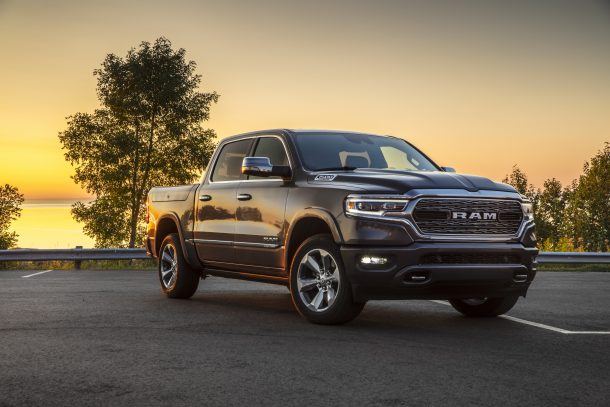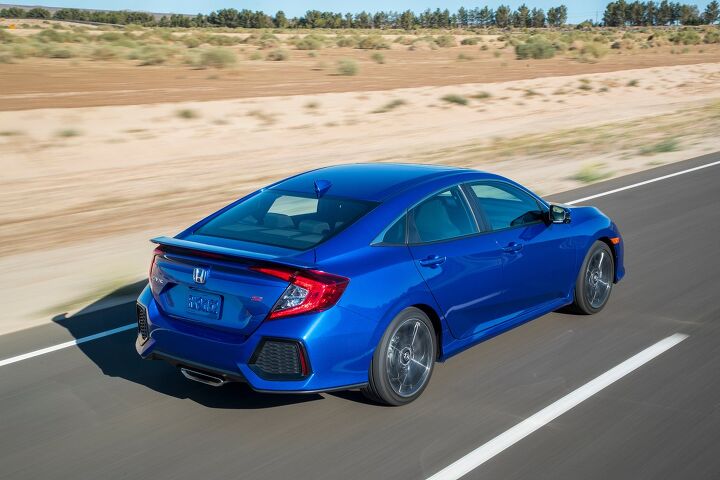August Brings Elevated Incentives, Higher Transaction Prices - But Not for Everyone

A flurry of new model additions benefitted many automakers with additional sales and greater revenue last month, and none more so than Fiat Chrysler, which saw its average U.S. transaction price rise 6.2 percent, year over year. Can you guess which segments pulled in the most extra money per vehicle? Bet you can.
At the other end of the yardstick, two foreign automakers basking in the glow of a very healthy sales month saw their average transaction prices fall.
Kelley Blue Book estimates the average selling price of a new vehicle rose 2 percent ($723) across the board last month, with incentives as a percentage of MSRP coming in above 10 percent — a summertime hike occurring after eight months of incentive spending falling below 10 percent. ALG pegs the industry-wide incentive spend at 11.2 percent, up 1.2 percent from August 2018.
Thanks to new product like the Jeep Gladiator, FCA’s average transaction price rose to $40,823 (before consumer incentives), below that of its Detroit Three rivals but still a marked hike from this time last year. A greater volume of new-generation Ram 1500s and Jeep Wrangler JLs pouring out the door also attributed to the jump. Compared to FCA’s 6.2 percent, Ford and General Motors saw ATPs rise a much more modest 2.9 and 2.1 percent, respectively.
According to KBB, average full-size pickup prices rose 3 percent, year over year, with the midsize class — helped along by the recently added Ford Ranger — climbing 3.9 percent. The segment with the greatest ATP gain was premium midsize crossovers, at 4.2 percent.
Which automakers saw their ATPs drop, year over year? American Honda and Nissan North America, that’s who, and you can place the blame on a problem many automakers would like to have: generous sales. The combined sales of Honda and Acura vehicles rose 17.6 percent in August, with Nissan and Infiniti combining for a 13.2-percent increase — good news in a market generally expected to fall behind last year’s annual sales tally. However, the sales gain at Nissan was decidedly lopsided.
While Nissan-brand vehicles rose 16.2 percent, with the gain pretty much evenly split between cars and light trucks (16.1 percent and 16.3 percent, respectively), the value brand had to make up the difference lost by a faltering Infiniti division. Infiniti sales shrunk 14.9 percent last month, with the premium brand now down 12.7 percent since the start of the year. Looking closer, only one Infiniti vehicle — the QX60 midsize crossover — posted a year-over-year sales increase last month, which doesn’t bode well for the automaker’s coffers. The brand’s performance earned it a rock-bottom entry on ALG’s Retail Health Index among premium brands.
Nissan’s YTD sales, in comparison, fell behind 2018 figures by just over 5 percent.
With fewer luxury models rolling out of dealerships, Nissan’s tally, which included a large uptick in sales of the revamped Altima sedan, took up a larger share of the company’s overall volume. This explains the ATP drop. At Honda, a surprise 19.8-percent increase in honest-to-goodness passenger cars sales outpaced the increase in light truck sales. Acura saw car sales rise 24 percent, with light trucks falling 5.1 percent. Again, more cheaper cars being sold will tip the ATP scales.
Why so many cars being sold, you ask? Besides an extra selling day last month, incentivization leading up to the end of summer (and especially Labor Day) might have a lot to do with it, though ALG estimates Nissan’s incentive spend per unit actually dropped 4.9 percent compared to August 2018. It looks like the automaker is at least partly abiding by its promise to lean less on discounts to stimulate sales. The company just needs to weather the sales storm and slim down behind the scenes. Honda, on the other hand, saw its average incentive spend shoot up 15.8 percent, year over year — easily eclipsing FCA’s 9-percent increase and GM’s 8.8-percent hike.
The automaker least likely to spiff its sales last month was Kia, which recorded a 12.7-percent decrease in incentive spending. Ford also ranks high on the list of leaner automakers, with a 6.9-percent drop.
[Images: Fiat Chrysler Automobiles, Nissan, Honda]

More by Steph Willems
Latest Car Reviews
Read moreLatest Product Reviews
Read moreRecent Comments
- Amy I owned this exact car from 16 until 19 (1990 to 1993) I miss this car immensely and am on the search to own it again, although it looks like my search may be in vane. It was affectionatly dubbed, " The Dragon Wagon," and hauled many a teenager around the city of Charlotte, NC. For me, it was dependable and trustworthy. I was able to do much of the maintenance myself until I was struck by lightning and a month later the battery exploded. My parents did have the entire electrical system redone and he was back to new. I hope to find one in the near future and make it my every day driver. I'm a dreamer.
- Jeff Overall I prefer the 59 GM cars to the 58s because of less chrome but I have a new appreciation of the 58 Cadillac Eldorados after reading this series. I use to not like the 58 Eldorados but I now don't mind them. Overall I prefer the 55-57s GMs over most of the 58-60s GMs. For the most part I like the 61 GMs. Chryslers I like the 57 and 58s. Fords I liked the 55 thru 57s but the 58s and 59s not as much with the exception of Mercury which I for the most part like all those. As the 60s progressed the tail fins started to go away and the amount of chrome was reduced. More understated.
- Theflyersfan Nissan could have the best auto lineup of any carmaker (they don't), but until they improve one major issue, the best cars out there won't matter. That is the dealership experience. Year after year in multiple customer service surveys from groups like JD Power and CR, Nissan frequency scrapes the bottom. Personally, I really like the never seen new Z, but after having several truly awful Nissan dealer experiences, my shadow will never darken a Nissan showroom. I'm painting with broad strokes here, but maybe it is so ingrained in their culture to try to take advantage of people who might not be savvy enough in the buying experience that they by default treat everyone like idiots and saps. All of this has to be frustrating to Nissan HQ as they are improving their lineup but their dealers drag them down.
- SPPPP I am actually a pretty big Alfa fan ... and that is why I hate this car.
- SCE to AUX They're spending billions on this venture, so I hope so.Investing during a lull in the EV market seems like a smart move - "buy low, sell high" and all that.Key for Honda will be achieving high efficiency in its EVs, something not everybody can do.




































Comments
Join the conversation
"Which automakers saw their ATPs drop, year over year? American Honda and Nissan North America, that’s who, and you can place the blame on a problem many automakers would like to have: generous sales. " More sales for less transaction prices means Honda and Nissan offered higher incentives or/and larger share of fleet sales.
@highdesertcat--More of economic uncertainty caused by trade wars than the upcoming elections. Still too early to predict elections especially since the Democrats still need to narrow down their list of Presidential candidates. Farmers are being hit the worst by the trade war with China and we have yet to enter the all important holiday shopping season. As for auto and truck sales at some point there will be a noticeable downturn because they have been hot for so long that the level of sales is not sustainable. Also there is just so long a car loan can be extended to keep payments affordable especially when vehicle prices are steadily increasing. Some of the fear of economic downturn can be blamed on PODUS and some can be blamed on political uncertainty but much of the fear is that the economy has been good for so long that it cannot last--this is just part of the economic cycle.